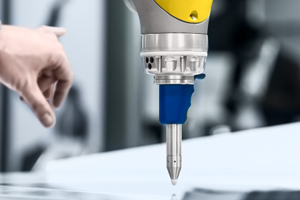Manufacturing innovation requirements in Industry 4.0

Industry 4.0 is quickly becoming the new reality in the market, and every innovative manufacturer must embrace it to stay competitive. To achieve full manufacturing innovation, businesses must be able to define what they need and the required operational changes to stay successful in the next phase of industrial production design.
But what, exactly, will Industry 4.0 require from your business?
As smart machines, materials and products begin to proliferate, so does the data they produce. How should innovative manufacturers prepare themselves to harness this data and these intelligent networks to be more competitive, more responsive and more agile?
In this series, we will address six key capabilities that will become even more critical for your manufacturing business as Industry 4.0 becomes your reality: speed, advanced automation, connection, insight, effective action and agility.
Manufacturing innovation requirement #1: Speed
Speed is one of the most critical factors determining today’s market leadership. Companies that get their innovations to market more quickly than the competition will capture greater market share. For manufacturers, speed must always be coupled with quality. But the increasing complexity of processes with increased data inputs and decision criteria create added barriers to speed.
Where are we seeing these manufacturing innovation barriers most?
New product introduction (NPI). The growing power of consumer preference is driving the proliferation of customized features. Even with the added complexity for NPI, companies will simultaneously face growing pressure to shorten time to market.
Engineering and component changes. Speed means companies must react quickly to both after-market feedback and complex supply chain changes and interruptions as they attempt to shorten the cycle time for engineering changes.
Cost optimization. Continuing optimization to remain cost competitive requires quick detection and response to fluctuations in supply alternatives and market prices.
Quality issue resolution. Anticipating potential quality issues before they happen will require continued monitoring of the intelligence of every node on the intelligent network.
Industry 4.0 anticipates that our already complex products, processes and supply chains will multiply in complexity with the exponential growth of intelligent data streams into the mix. With supply chains more complex than ever, getting faster at the same time requires a different paradigm – driving the urgency of agile and adaptive manufacturing networks. That requires an infrastructure with specific characteristics.

Manufacturing innovation requirement #2: Advanced automation
So far, we’ve discussed how speed for the industries driving innovation will become even more critical as Industry 4.0 becomes a reality. Now, we must discuss automation and its evolution in the fourth Industrial Revolution.
We’ve seen some manufacturing industry analysts say that automation will be the nirvana of total connection and intelligence. Unfortunately, that is simply not practical. While automation continues to advance, cells of automation networks still require orchestration.
To achieve manufacturing innovation in Industry 4.0, manufacturers will have to invest in smart, Industrial Internet of Things-enabled machines and controls; these machines and controls should allow equipment to provide real-time information on processes and their condition – for example, up, down, supply needs or quality problems.
If we consider that devices, materials, components and products will also be intelligent, automation will become networked across plants and the supply chain. This will generate new feedback channels, error reduction capabilities and real-time awareness of quality and upstream and downstream conditions that affect the entire production line.
Yet creating a completely automated end-to-end system in iteration 1 is not realistic. That’s where the Enterprise Manufacturing Execution System (MES) is still the central brain, orchestrating signals across areas of automation.
Even beyond production, intelligence from these orchestrated automation networks will feed into improvement cycles, engineering changes and the next product lifecycle. It will bridge the gap between engineering and manufacturing – closing the loop across product development and the factory floor.
What is the promise of this new intelligent automation network? With more intelligent processes orchestrated by the Enterprise MES, the leap forward in efficiency feeds production speeds with far fewer resources and at a higher quality.
Making that promise a reality requires rethinking the orchestration of the network of automation in Industry 4.0.

This concludes our initial look at the capabilities that will be more crucial for your manufacturing innovation as Industry 4.0 progresses. We will continue exploring these capabilities in the next part of our series.
About the author
With more than 20 years of experience, first as a manufacturer and then with Siemens, Alastair Orchard has focused on the gains in operational efficiency that Advanced Automation, MES and MOM delivery. He now focuses on Industry 4.0 and the consumerization of manufacturing. Alastair currently leads a global team running the Digital Enterprise Project to help customers take advantage of the synergies possible between product ideation, realization and utilization through the digital transformation of their business processes. Alastair holds an engineering degree in chemical engineering from the Loughborough University of Technology in the U.K. and lives in Genoa, Italy with his wife and four children.


